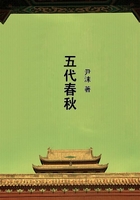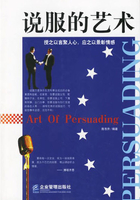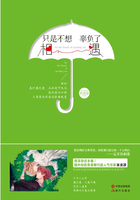Thus in these harvest-customs of modern Europe the person who cuts, binds, or threshes the last corn is treated as an embodiment of the corn-spirit by being wrapt up in sheaves, killed in mimicry by agricultural implements, and thrown into the water. These coincidences with the Lityerses story seem to prove that the latter is a genuine description of an old Phrygian harvest-custom. But since in the modern parallels the killing of the personal representative of the corn-spirit is necessarily omitted or at most enacted only in mimicry, it is desirable to show that in rude society human beings have been commonly killed as an agricultural ceremony to promote the fertility of the fields. The following examples will make this plain.
3. Human Sacrifices for the Crops.
THE INDIANS of Guayaquil, in Ecuador, used to sacrifice human blood and the hearts of men when they sowed their fields. The people of Ca?ar (now Cuenca in Ecuador) used to sacrifice a hundred children annually at harvest. The kings of Quito, the Incas of Peru, and for a long time the Spaniards were unable to suppress the bloody rite. At a Mexican harvest-festival, when the first-fruits of the season were offered to the sun, a criminal was placed between two immense stones, balanced opposite each other, and was crushed by them as they fell together. His remains were buried, and a feast and dance followed. This sacrifice was known as the meeting of the stones. We have seen that the ancient Mexicans also sacrificed human beings at all the various stages in the growth of the maize, the age of the victims corresponding to the age of the corn; for they sacrificed new-born babes at sowing, older children when the grain had sprouted, and so on till it was fully ripe, when they sacrificed old men. No doubt the correspondence between the ages of the victims and the state of the corn was supposed to enhance the efficacy of the sacrifice.
The Pawnees annually sacrificed a human victim in spring when they sowed their fields. The sacrifice was believed to have been enjoined on them by the Morning Star, or by a certain bird which the Morning Star had sent to them as its messenger. The bird was stuffed and preserved as a powerful talisman. They thought that an omission of this sacrifice would be followed by the total failure of the crops of maize, beans, and pumpkins. The victim was a captive of either sex. He was clad in the gayest and most costly attire, was fattened on the choicest food, and carefully kept in ignorance of his doom. When he was fat enough, they bound him to a cross in the presence of the multitude, danced a solemn dance, then cleft his head with a tomahawk and shot him with arrows.
According to one trader, the squaws then cut pieces of flesh from the victim's body, with which they greased their hoes; but this was denied by another trader who had been present at the ceremony. Immediately after the sacrifice the people proceeded to plant their fields. A particular account has been preserved of the sacrifice of a Sioux girl by the Pawnees in April 1837 or 1838. The girl was fourteen or fifteen years old and had been kept for six months and well treated. Two days before the sacrifice she was led from wigwam to wigwam, accompanied by the whole council of chiefs and warriors. At each lodge she received a small billet of wood and a little paint, which she handed to the warrior next to her. In this way she called at every wigwam, receiving at each the same present of wood and paint. On the twenty-second of April she was taken out to be sacrificed, attended by the warriors, each of whom carried two pieces of wood which he had received from her hands. Her body having been painted half red and half black, she was attached to a sort of gibbet and roasted for some time over a slow fire, then shot to death with arrows. The chief sacrificer next tore out her heart and devoured it. While her flesh was still warm it was cut in small pieces from the bones, put in little baskets, and taken to a neighbouring corn-field. There the head chief took a piece of the flesh from a basket and squeezed a drop of blood upon the newly-deposited grains of corn. His example was followed by the rest, till all the seed had been sprinkled with the blood; it was then covered up with earth. According to one account the body of the victim was reduced to a kind of paste, which was rubbed or sprinkled not only on the maize but also on the potatoes, the beans, and other seeds to fertilise them. By this sacrifice they hoped to obtain plentiful crops.
A West African queen used to sacrifice a man and woman in the month of March. They were killed with spades and hoes, and their bodies buried in the middle of a field which had just been tilled. At Lagos in Guinea it was the custom annually to impale a young girl alive soon after the spring equinox in order to secure good crops. Along with her were sacrificed sheep and goats, which, with yams, heads of maize, and plantains, were hung on stakes on each side of her. The victims were bred up for the purpose in the king's seraglio, and their minds had been so powerfully wrought upon by the fetish men that they went cheerfully to their fate. A similar sacrifice used to be annually offered at Benin, in Guinea. The Marimos, a Bechuana tribe, sacrifice a human being for the crops. The victim chosen is generally a short, stout man. He is seized by violence or intoxicated and taken to the fields, where he is killed amongst the wheat to serve as seed (so they phrase it). After his blood has coagulated in the sun, it is burned along with the frontal bone, the flesh attached to it, and the brain; the ashes are then scattered over the ground to fertilise it. The rest of the body is eaten.















